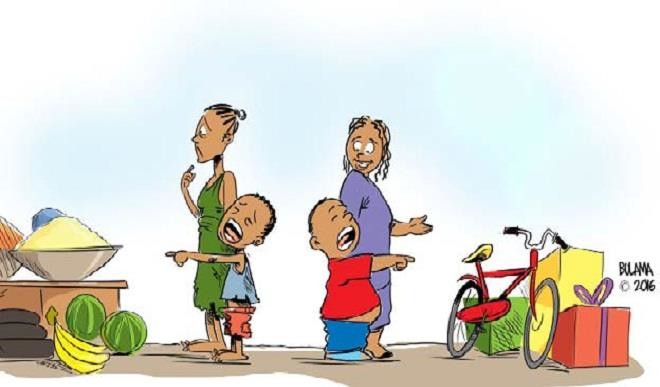
There are many compounding differences between kids who do well later in life and those who face great obstacles. Dealing with threats like this can contribute to the growing inequality in every country and become one of the obstacles to a country’s economic and social progress.
Social stratification can be defined as the division of a society into layers (or strata) whose occupants have unequal access to social opportunities and rewards. People at the top enjoy benefits like power, prosperity and prestige that are not available to other members of society, while those at the bottom endure penalties that other members of society escape. In a stratified society, inequality is part of the social structure and passes from one generation to the next.
As a result of the huge disparities existing between rich and poor kids, this has become part of almost every policy discussion: from health care to quality education and securing good jobs. This has become a cause for concern for many people. This is reflected in the varied responses Life Xtra got from people when it went to town.
Thirty-year-old banker, Kim Oshios, said: “When I was much younger, in primary school precisely, we knew those who attended public and private secondary schools but we were all friends. The disparity existing now never really existed then because despite our backgrounds, we still played together as friends and related well.”
He added that: “But today, I see a huge gap between students from public schools and those from private, and it baffles me to see how even little kids can be so discriminatory against one another. I think their parents have contributed to this.”
Nwabokei Winifred,, who is in her mid-20s, believes one of the reasons why the issue of social stratification has come a big issue is the way kids are being taught in school. “The poems the kids in private schools recite are different from the ones those in public school recite, hence the huge difference between them,” Winifred noted.
“The intellectual capability of a private school pupil cannot be compared to that of a public school pupil. I heard someone say that if a child in a public school is very good academically, one should then put him/her in a private school and see how he/she will be a genius,” she added.
Factors such as discrimination, and other social vices are what account for the existence of this huge disparity between rich and poor kids, says Roy Omamuyowei, an engineer in his early 30s. “I went to a public school and had close friends that went to private schools. We related on the same level then because it didn’t matter whether we went to a public or private school,” he remarked.
Recalling a story his father told him, Omamuyowei said: “My dad told me of how much envy children who didn’t attend public schools had for them. Is that not the irony of today? Every parent wants their child to be in a private school and every child wants to attend one too.”
He argued that the disparity that exists today cannot change. “In fact, the question should be how, where and when will a poor child be in the same place at the same time, not to talk of relating with each other,” he remarked.
Mrs. Ufuoma Tricia, a mother of four in her early 50s, opined that public schools used to be the best and their products then were very respected and appreciated in the society. “I can say they were the best then. But today, a child who is in a private school is better equipped. My point is that rich and poor children will always be different. It may not be the intention of the children but that is what the society has caused,” she stressed.
In an article titled, “Rich children and poor children are living in different worlds. What can we do about it?” posted on www.blogs.telegraph.co.uk, Neil O’Brien posits that: “In the past, rich and poor people, at least, liked the same things, and had the same attitudes and values.’’ Quoting from a book, ‘‘Coming Apart,’’ by Charles Murray, O’Brien observes that the author noted that the top and bottom parts of the society have grown far apart culturally.
He argues that the decline of marriage, family stability, industriousness and religiosity – and the rise of criminality – has been much greater at the bottom of society than the top. O’Brien notes further that: “But it’s also true that people’s experiences and backgrounds can make them less likely to succeed, and more likely to fail. Some on the right think the welfare system has undermined the self-reliant culture of the poor, reducing work incentives and destabilising families.”
He argues that: “They worry that attempts to meddle with the family life of the poor will either be ineffective, or will represent unacceptable nanny-statism. They worry that the welfare system will encourage people to have children when they will then struggle to raise.”
The question now is: What can be done to close the gap in the disparity between the rich and poor kids which obviously is caused by the parents?

 Join Daily Trust WhatsApp Community For Quick Access To News and Happenings Around You.
Join Daily Trust WhatsApp Community For Quick Access To News and Happenings Around You.


